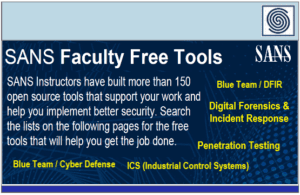Source: www.hackercombat.com – Author: Hacker Combat.
The Extended Detection and Response Platform (XDR) ingestion and correlation technology captures and correlates high-fidelity data across your security layers, such as endpoint, network, logs, cloud services and identities to provide full attack surface visibility as well as provide context for alerts.
True XDR platforms differ from traditional SIEM in that they provide relevant and curated telemetry that allows security teams to investigate threats quickly, thus helping reduce security sprawl and alert fatigue.

XDR Extended Detection and Response
XDR improves visibility and speed by consolidating findings from disparate security tools into one console, streamlining alert fatigue management and eliminating human error while freeing analysts up for more complex investigations.
Contrary to EDR solutions that operate as standalone solutions and only monitor device-level threats, XDR integrates information from multiple layers of defense in order to enable security teams to detect sophisticated attacks spanning across different areas of an organization.
Telemetry and advanced analytics can be combined to detect new anomalies, which are then combined into an attack story with enhanced context for enhanced threat detection. These stories give insight into attacker TTPs while providing more visibility.
XDR then takes a risk-based approach to prioritize and isolate threats by impact, indicators and timelines – simplifying investigation and remediation workflows while relieving security teams of having to create, adjust or manage detection rules manually.
SIEM Security Information and Event Management
SIEM tools offer an in-depth view of security data by collating and correlating information from multiple sources. This allows for identification of indicators of compromise, surface threats and prioritizing alerts as well as meeting compliance reporting requirements such as those mandated by PCI DSS SOX HIPAA etc.
SIEM can also reduce false alerts, enabling teams to focus on only the most serious incidents. Furthermore, it helps organizations identify and document response plans so that they are equipped to quickly react to threats that arise.
Managed XDR solutions can be easier to set up and require less maintenance because they come from one vendor who already includes all necessary threat detection tools in their product. Furthermore, managed solutions may be more affordable for small businesses than fully integrated SIEM solutions which may prove too expensive. It is essential that when making this purchase decision you carefully consider your business goals; as this will impact its long-term value.
Choosing Between XDR and SIEM
Selecting between an XDR and SIEM can be a complex endeavor that takes many considerations into account, including existing infrastructure, resource limitations, and potential threats. Organizations should carefully weigh each option against their strategic goals to ensure it aligns with each option – for instance prioritizing integration capabilities and scalability to ensure smooth operations and transitions, and considering how a solution will impact mean time-to-detect (MTTD)/mean time-to-respond (MTTR) metrics which are crucial in mitigating risks and losses.
If they have limited resources or budgetary restrictions, an XDR solution might be an ideal choice as it provides lower total cost of ownership and eliminates multiple security tools by offering one platform with detection and response capabilities. Furthermore, AI and machine learning technology allows XDR to offer superior threat detection in terms of patterns and anomalies identified during analysis.
XDR Challenges
XDR brings together multiple security tools to assist organizations in protecting their infrastructure against threats, providing several advantages but also raising some concerns.
One challenge XDR systems present is their dependence on skilled personnel to process alerts generated by these systems, often creating an overwhelming number of alerts that require security teams to go through and prioritize. This process can be resource intensive and complex in an environment with few cybersecurity specialists available.
Another challenge of XDR solutions is their inability to incorporate data from specific solution vendors, limiting their ability to detect and respond to threats across an organization’s security ecosystem. This could potentially prolong dwell times as attackers remain undetected.
However, XDR vendors are beginning to address this problem by providing open XDR solutions that enable security teams to integrate them with third-party tools of their choosing, helping reduce dependence on any one vendor and improve visibility and threat detection.
SIEM Challenges
SIEMs collect and analyze log data from across an organization’s technology infrastructure – from host systems and applications to network and security devices – in order to detect patterns and alert security professionals when abnormalities arise.
However, SIEMs face a range of obstacles. Implementation and configuration may be complex for organizations that must integrate multiple systems with differing formats and structures into a SIEM environment; additionally, setting correlation rules and fine-tuning alert thresholds requires expertise that SIEM providers don’t possess.
SIEMs can also suffer from alert overload and false positives, leading analysts to miss critical threats and experience stress and burnout. To combat this problem, next-gen SIEMs are taking advantage of AI to reduce alerts – for instance advanced SIEMs use user behavior analytics (UBA) to determine normal user behaviors that help detect attacks by looking out for deviations from this baseline behavior.
Conclusion
EDR solutions feature a host of features designed to bolster cybersecurity. These features include real-time monitoring, alert triage, dormant threat scanning for potential threats that could emerge under certain conditions and more. Furthermore, EDR solutions monitor endpoint hygiene to ensure compliance with security policies and minimize risks from external devices like USBs.
XDR provides visibility solutions by collecting enriched threat data from multiple sources, such as endpoints, cloud workloads, network email servers and more. It then consolidates this data in one console for advanced threat hunting and investigation.
Managed detection and response (MDR) is a managed service that equips security teams with the ability to detect, respond to, and remediate cyberthreats and vulnerabilities faster. By freeing up overburdened cybersecurity teams to focus on strategic initiatives aligning with business goals instead of on threat detection/mitigation/mitigation efforts alone.
Original Post url: https://www.hackercombat.com/xdr-vs-siem/
Category & Tags: Endpoint Security – Endpoint Security
Views: 2




















































